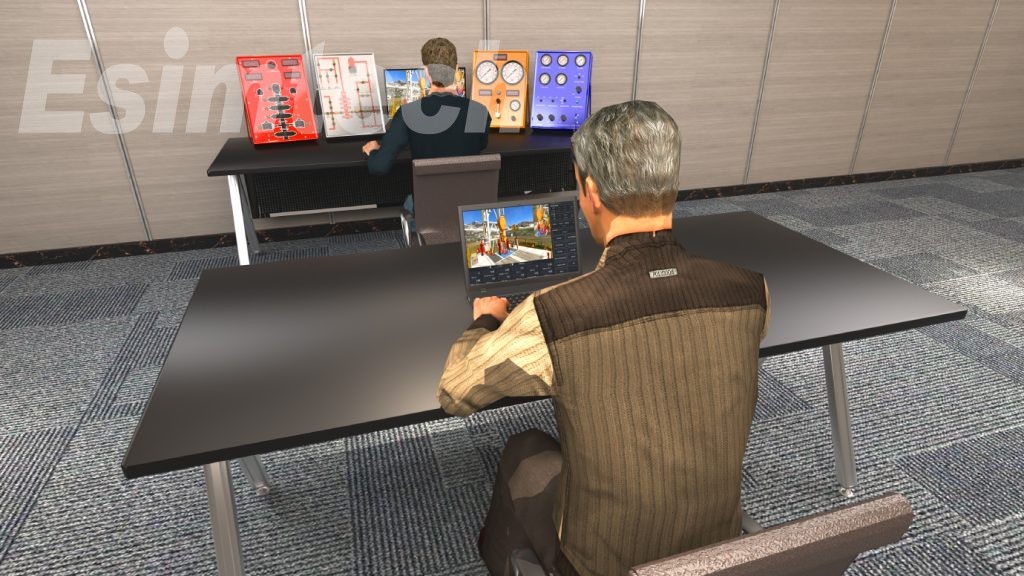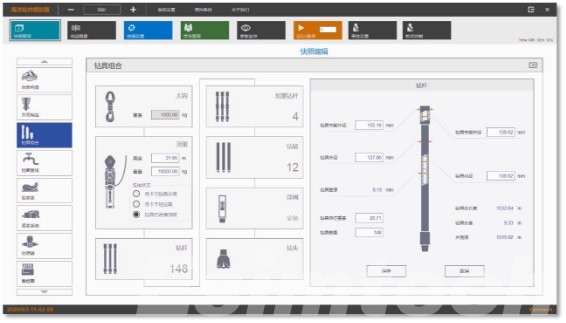This article is aiming to introducing portable workover simulators which has transformed the way the oil and gas industry approaches workover operations, emphasizing the importance of highly qualified personnel and meticulous planning to ensure productivity and safety in the field. These portable simulators leverage cutting-edge software, hardware, and virtual reality technologies to create realistic and immersive training environments that can be deployed wherever workover activities are conducted. Let's delve deeper into the core components and functions of these portable workover simulators.

Key Components of Portable Workover Simulators
Portable Computer or Laptop: The primary hardware component of a portable workover simulator is a high-performance PC or laptop. It should feature a robust processor, ample memory, and a dedicated graphics card capable of rendering intricate simulations. Portability is a key feature, allowing the setup of the simulator at workover sites.
Virtual Reality (VR) or Augmented Reality (AR) Devices: Many workover simulations integrate VR or AR technologies to enhance the user experience. Headsets, goggles, or glasses create immersive visuals and provide a sense of presence within the virtual environment. These devices may also include hand controllers or other input mechanisms for users to interact with and perform tasks on the simulated equipment.
Haptic Feedback Devices: Haptic feedback devices offer tactile sensations to the user, heightening the realism of the simulation. Through vibrations or forces applied to the user's hands or other body parts, these devices simulate the sensation of touch. For example, when handling virtual tools or equipment, haptic feedback can offer resistance or feedback, mimicking the physical sensations experienced during actual workover procedures.
Simulation Software: The heart of portable workover simulators is their simulation software. This oil and gas software is responsible for crafting the virtual environment, replicating the physics and mechanics of workover operations, and providing an interactive experience. It generates lifelike graphics, models fluid and equipment behaviors, and incorporates real-world data to faithfully represent well conditions and associated challenges.

Data Integration and Analysis: Workover simulators rely heavily on simulation software to create the virtual world and provide a realistic experience. The software can integrate real-time data streams from the field, enhancing the simulation and offering valuable insights. This may include data on well parameters, production statistics, or equipment performance. By incorporating real-time data, the simulator can dynamically adjust the simulation based on changing conditions and provide operators with feedback and analysis of their actions and decisions.
User Interface and Controls: A user-friendly interface and intuitive controls ensure effective interaction with the simulator. Operators can navigate the virtual environment, control equipment, and make decisions through an interface that closely mirrors real-world workover operations.
Key Functionality of Portable Workover Simulators
Realistic Workover Environment: Portable workover simulators meticulously replicate the physical environment encountered during actual workover procedures. They model the wellbore, downhole equipment, and geological features of the workover site, providing a visually accurate representation. This realism aids workers in familiarizing themselves with the specific conditions they will face and enhances their understanding of the operational environment.
Interactive Training: Portable workover simulators encourage active participation in simulated workover processes, facilitating interactive training sessions. Users can manipulate virtual tools and equipment, execute tasks, and engage in various workover operations within the simulator. This hands-on approach aids workers in skill development, decision-making enhancement, and confidence building.
Scenario Customization: These simulators permit the customization of scenarios to match the specific well conditions and operational requirements of each site. Operators can input site-specific data, such as well parameters, production history, and equipment specifications, to create virtual well models closely mirroring the actual workover site. This customization allows personnel to learn and plan in an environment that accurately replicates their specific well's characteristics.
Real-Time Feedback and Assessment: Portable workover simulators offer real-time feedback and assessment of user actions and performance. The simulator continuously monitors and evaluates user interactions and decisions, providing prompt feedback on technique, timing, and adherence to safety protocols. This real-time assessment allows workers to learn from their mistakes, adjust their techniques, and enhance their overall competence in workover operations.
Planning and Optimization: These simulators provide real-time workover planning and optimization capabilities. Operators can experiment with various workover strategies, identify potential risks, and refine their plans for increased efficiency. The simulator serves as a platform for operators to explore different scenarios, assess potential outcomes, and optimize workover operations, ultimately reducing operational risks.
Safety Protocol Training: Safety is paramount in workover operations, and portable simulators play a vital role in improving safety training. They offer a controlled environment for personnel to practice safety protocols, emergency procedures, and critical safety skills related to workover tasks. By simulating potential hazards and emergency scenarios, workers can acquire essential skills and reflexes for effective responses in real-life situations.
In summary, the introduction of portable workover simulators represents a significant advancement in the oil and gas industry, revolutionizing workover operations by enhancing training, safety, and operational efficiency. These portable devices provide a valuable tool for workforce development and preparation for real-world workover challenges.









Comments (0)